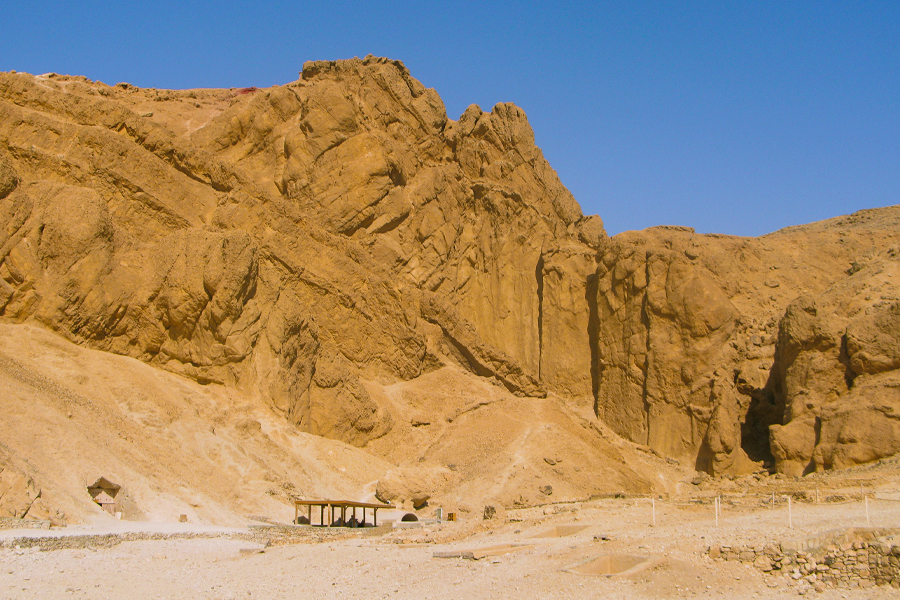The Valley of the Queens is in the Egyptian city of Luxor. A complete list of the royal wives, concubines, and other royal women who worked for the ancient Egyptian pharaohs and their tombs. This in-depth guide to the Valley of the Queens, Princes, and Princesses gives you historical background, a detailed map, and insider information on various topics, such as when to go, how much it will cost, when Nefertari’s tomb was built, and more. It is a great place to start your tour of Egypt’s cultural sites.
What does the Valley of the Queens mean?
In ancient Egyptian, the name means “the place where the pharaoh’s children live,” which in modern Egyptian sounds like “ta-sit-before.”
Why was the Valley built?
In the tombs in the Valley of the Queens are the bodies of kings, queens, and princes from the New Kingdom of Ancient Egypt.
What are the dynasties buried in the Valley of the Queens?
Only New Kingdom royal family members from the 18th, 19th, and 20th dynasties were buried there. This was true for queens, princes, and princesses, as well as a small number of ministers.
Where is the Valley of the Queens?
The city of Luxor in Egypt is on the western side of the river Nile.
The reason for choosing the Valley as the royal necropolis?
- The area is close to the artists’ village in the Deir Al Madinah neighborhood of Luxor.
- The Valley of the Kings is close to the site.
- This place is close to the cave of the goddess Hathor.
When was the Valley of the Queens built?
- The Valley has been used as a cemetery since the time of King Thutmose I, who ruled Egypt from 1292 to 1075 BC.
- Princess Ahmes was buried in the Valley of the Queens. She was the daughter of King Seknen Re and Queen Sat Jehuti, and her tomb was the first royal one to be found there.
What are the most important tombs in the Valley of the Queens?
You can find 91 royal tombs and 19 other restorations in the Valley. There are 92 graves altogether.
Tomb of Queen Nefertari:
Her husband, King Ramses II, paid close attention to the decorations and writings on the walls and burial chambers of this royal tomb, which is one of the largest and most beautiful in the Valley. In 1904, the tomb was found.
Tomb of Queen Titi:
As this was an essential part of Egyptian religion, the tomb is known for its inscriptions and decorations that show the holy journey and the journey to the fields of Yaro. In this area, you can find both the tomb of Prince Amun Khepeshef and the tomb of Prince Haa em Waset, who was King Ramses III’s son.
Stages of construction of the Valley of the Queens in Luxor:
18th Dynasty:
The first royal tomb in the Valley of the Queens belonged to Princess Ahmes, the daughter of King Seknen Re and Queen Sat Jehuti.
The tombs had a hallway that led to a room for the dead and a column for the dead. In some royal graves, many people were buried, while in others, only one was buried.
During the 18th Dynasty, royal cartouches were given to the son of King Thutmose III, the daughter of King Ti, the daughter of Queen Hatshepsut, and many other princes and princesses. During the 18th Dynasty, royal cartouches were given to the daughters of different rulers.
19th Dynasty:
During the 18th Dynasty, only the queens of the royal family could be buried at this time.
Here you can find the graves of Ramses I, Seti I, and Ramses II’s wives.
QV 38 was the first tomb built just for a 19th-dynasty queen.
After the queen’s name was written on cartouches and put at the entrance to the royal tomb, the kings put the mummies inside the graves they had built.
20th Dynasty:
The story goes that King Ramses III wanted to put all his children and wives in separate graves in the Valley of the Queens.
King Ramses VI had six separate tombs for his wife, children, and other family members.
During the reign of King Ramses III, the systematic theft of royal tombs, treasures, and jewels began.
Pharaonic Third Intermediate Period onwards:
During the 20th Dynasty, many royal tombs were made more prominent to hold more than one burial. These changes were made by kings, queens, and even some nobles.
The Copts are known for living in and decorating royal tombs with Christian symbols written on the walls. Up until the seventh century, a lot of people did this.
During the time of the Ptolemies, it was common for royal tombs to be used for more than one burial.
During the Romans, the Valley of the Queens was made more prominent to hold more of the most important royal family members who had died.


0 Comment